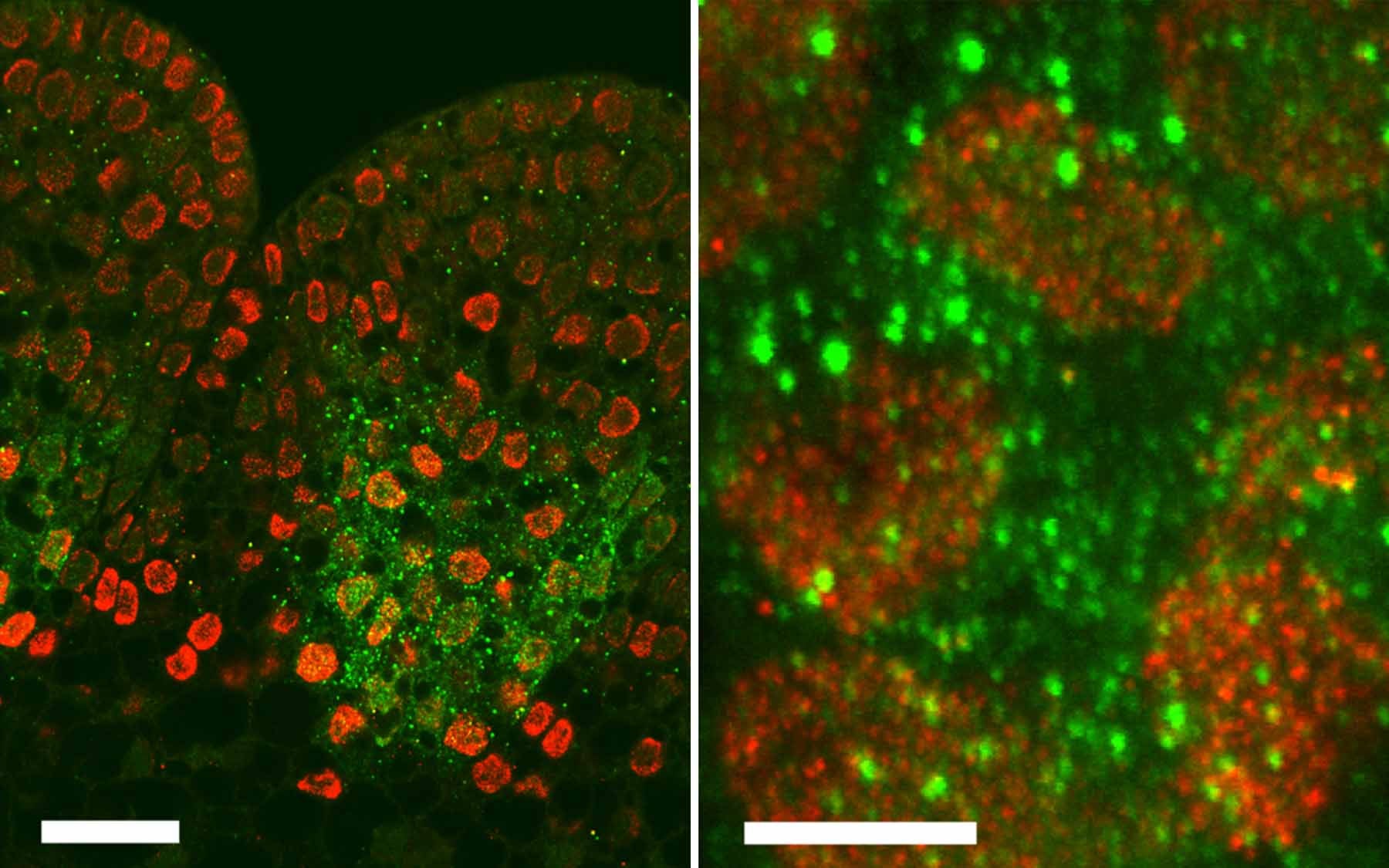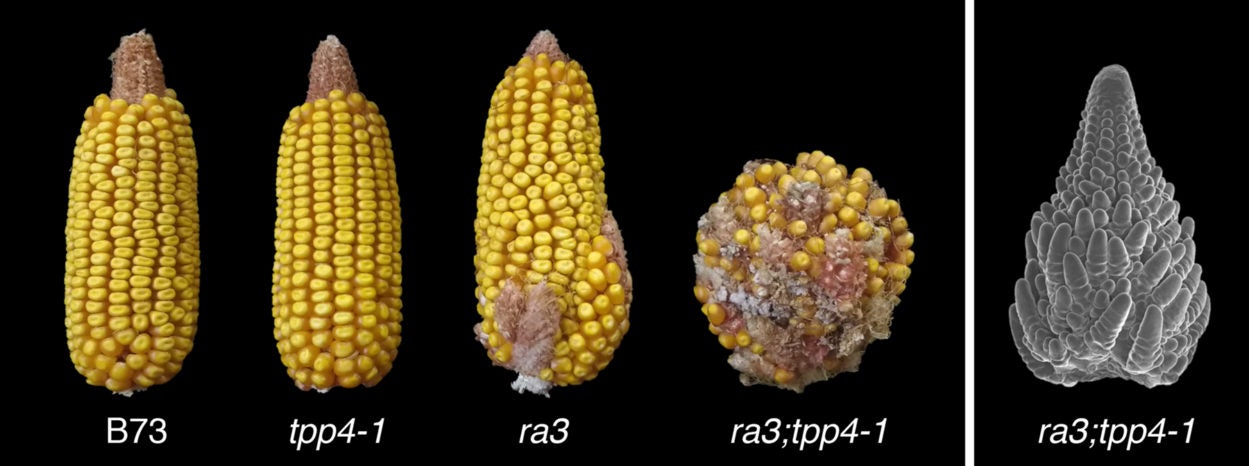Cold Spring Harbor, New York, USA
April 1, 2019

RA3 gene activity was detected and traced to presence in nucleus and cytoplasm of developing cell in maize ear. RA3 is in green and nuclei are counterstained in red.
Maize is a staple crop that came from humble beginnings. If you look at its wild ancestor, teosinte, the plant looks nearly unrecognizable. Human selection has persuaded the maize plant to grow in a way that produces higher yields and can be more efficiently harvested. But scientists and farmers are looking for ways, in the face of climate change, population growth, and other factors, to even further optimize maize yields.
Now, researchers at Cold Spring Harbor Laboratory (CSHL) have identified a relationship between crop yield in the maize plant and specific genetic activity associated with one of the plant’s metabolic pathways. The discovery has implications for plant breeding, potentially opening the door for increasingly resilient, higher-yield maize plants.

CSHL Professor David Jackson (pictured above) and his team have connected the RAMOSA3 gene to branching, which can affect its yield. When a maize plant has too many branches, it will expend more energy towards making those branches, and less towards making seeds. More branches often means lower or less efficient yields.
Ears, the part of maize that we eat, are normally not branched at all—they just form one straight cob. But maize mutants that don’t have the RAMOSA3 gene can end up with gnarly-looking branched ears.

Representative mature ears of genetically unaltered maize, maize with the tpp4 gene blocked, maize with the ra3 gene blocked and maize with both the ra3 and tpp4 genes blocked. Branching in the ear was observed when researchers blocked vital genes as compared to the normal unaltered maize.
Jackson and his team initially hypothesized that the enzyme that RAMOSA3 encodes, called TPP, and a sugar phosphate called T6P which TPP acts on, are likely responsible for the ear-branching. Although the precise function of T6P remains “largely elusive,” the scientists believe that it has signaling properties.
Then, in a surprising twist, they found that a related gene, TPP4, also helps to control branching, but that gene’s effect was unrelated to its enzymatic activity. They wondered if the same might be true for RAMOSA3 and its own enzymatic activity. To follow up on this, they blocked only the enzyme activity associated with RAMOSA3, and not the gene itself, and got normal-looking ears of maize. This indicates that although RAMOSA3 controls the activity of the enzyme, it seems the enzyme activity is not responsible for controlling branching. Thus, the gene may be “moonlighting” with a hidden activity, explains Jackson. The question of what that moonlighting may entail is a launching-off point for future research.
The team’s findings were published in Nature Plants. Their work could lead to better crop yields and more efficient harvesting for the maize plant, as well as for other crops, like rice and quinoa.
Funding
This research was funded by the National Science Foundation, Dupont Pioneer, the European Molecular Biology Organization, and the Vietnam National Foundation for Science and Technology Development.
Citation
Hannes, C. et al. “Control of meristem determinacy by trehalose-6-phosphate phosphatases is uncoupled from enzymatic activity” was published in Nature Plants on April 1, 2019.DOI: http://dx.doi.org/10.1038/s41477-019-0394-z
About Cold Spring Harbor Laboratory
Founded in 1890, Cold Spring Harbor Laboratory has shaped contemporary biomedical research and education with programs in cancer, neuroscience, plant biology and quantitative biology. Home to eight Nobel Prize winners, the private, not-for-profit Laboratory employs 1,100 people including 600 scientists, students and technicians. The Meetings & Courses Program annually hosts more than 12,000 scientists. The Laboratory’s education arm also includes an academic publishing house, a graduate school and the DNA Learning Center with programs for middle and high school students and teachers. For more information, visit www.cshl.edu